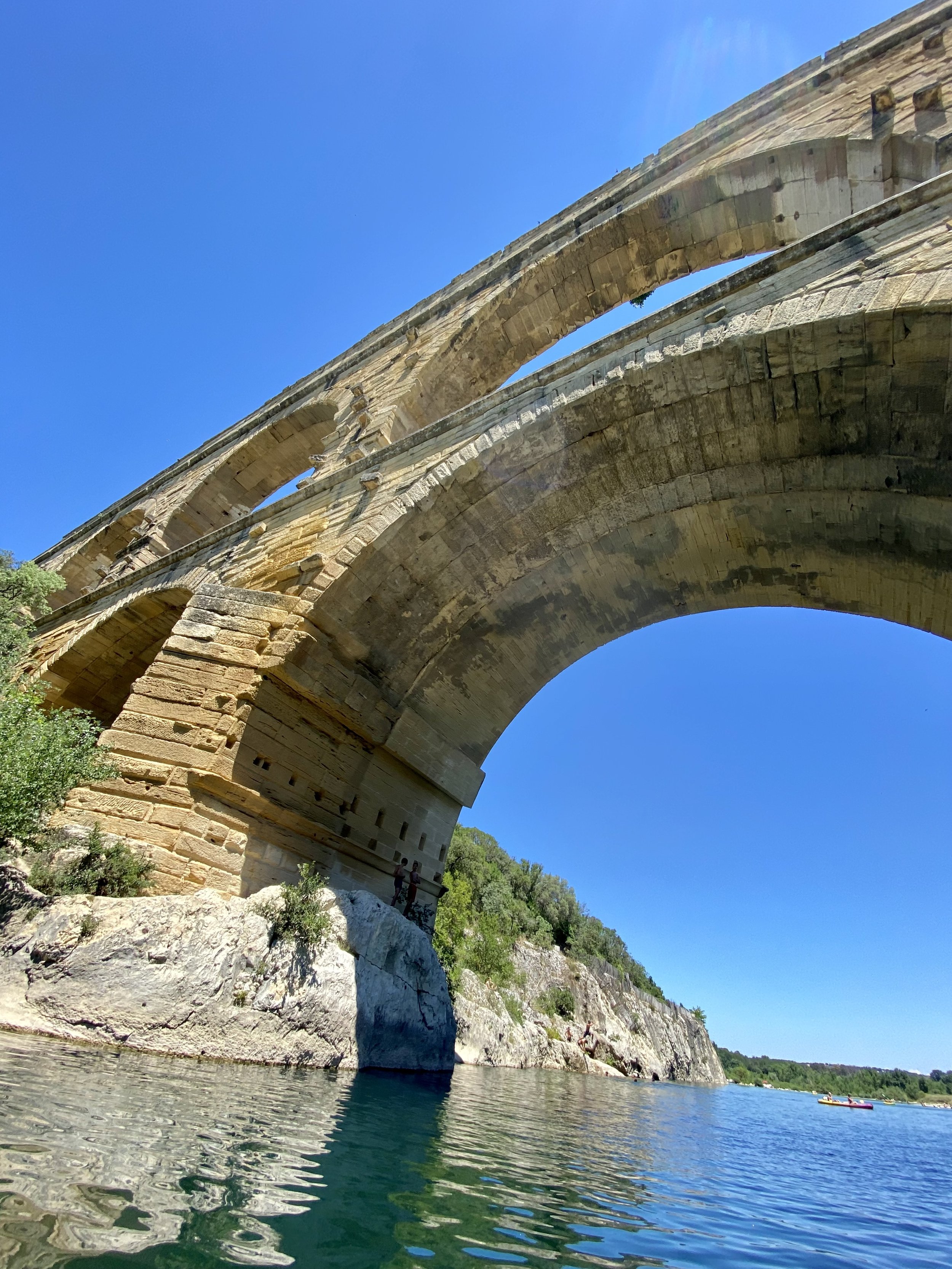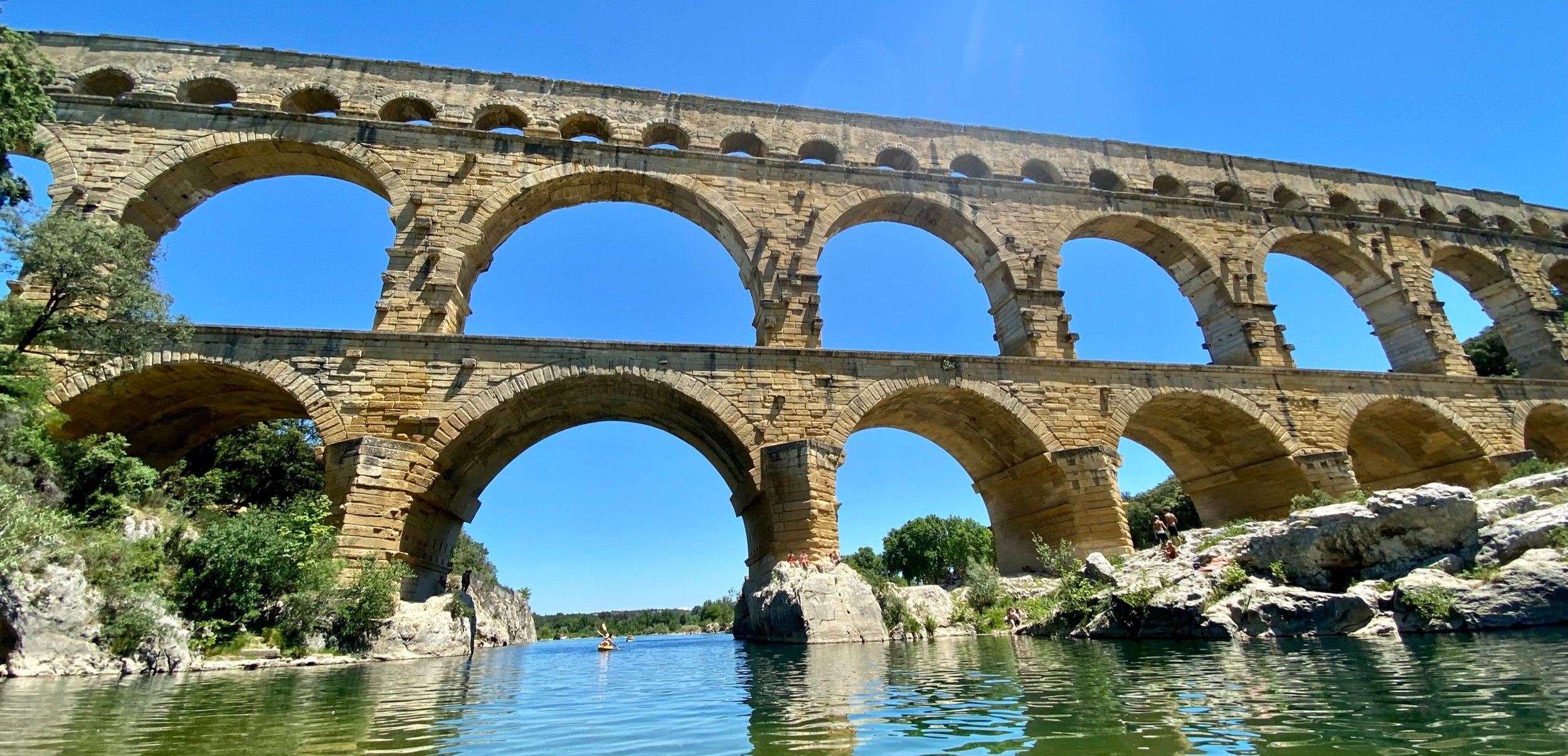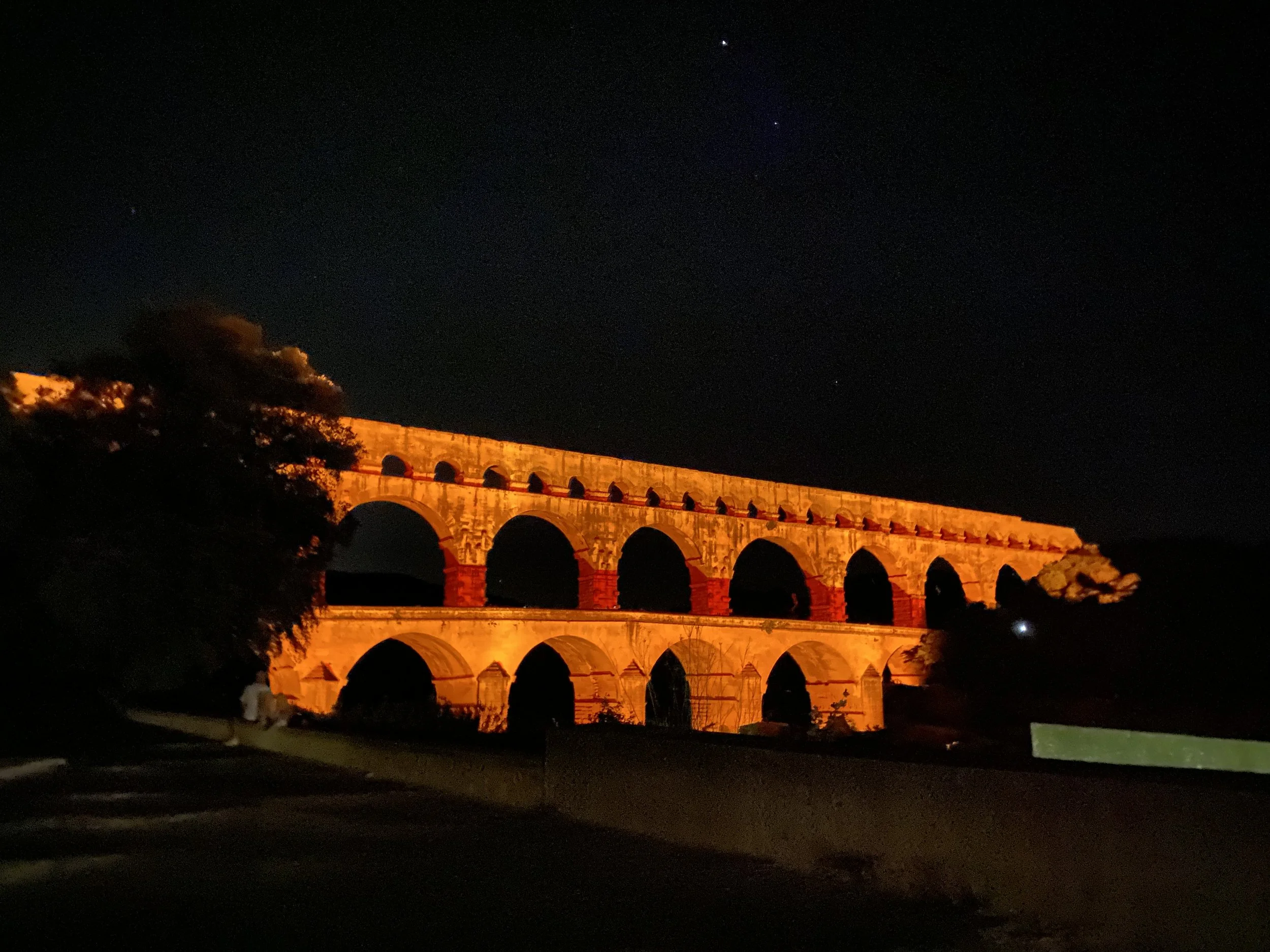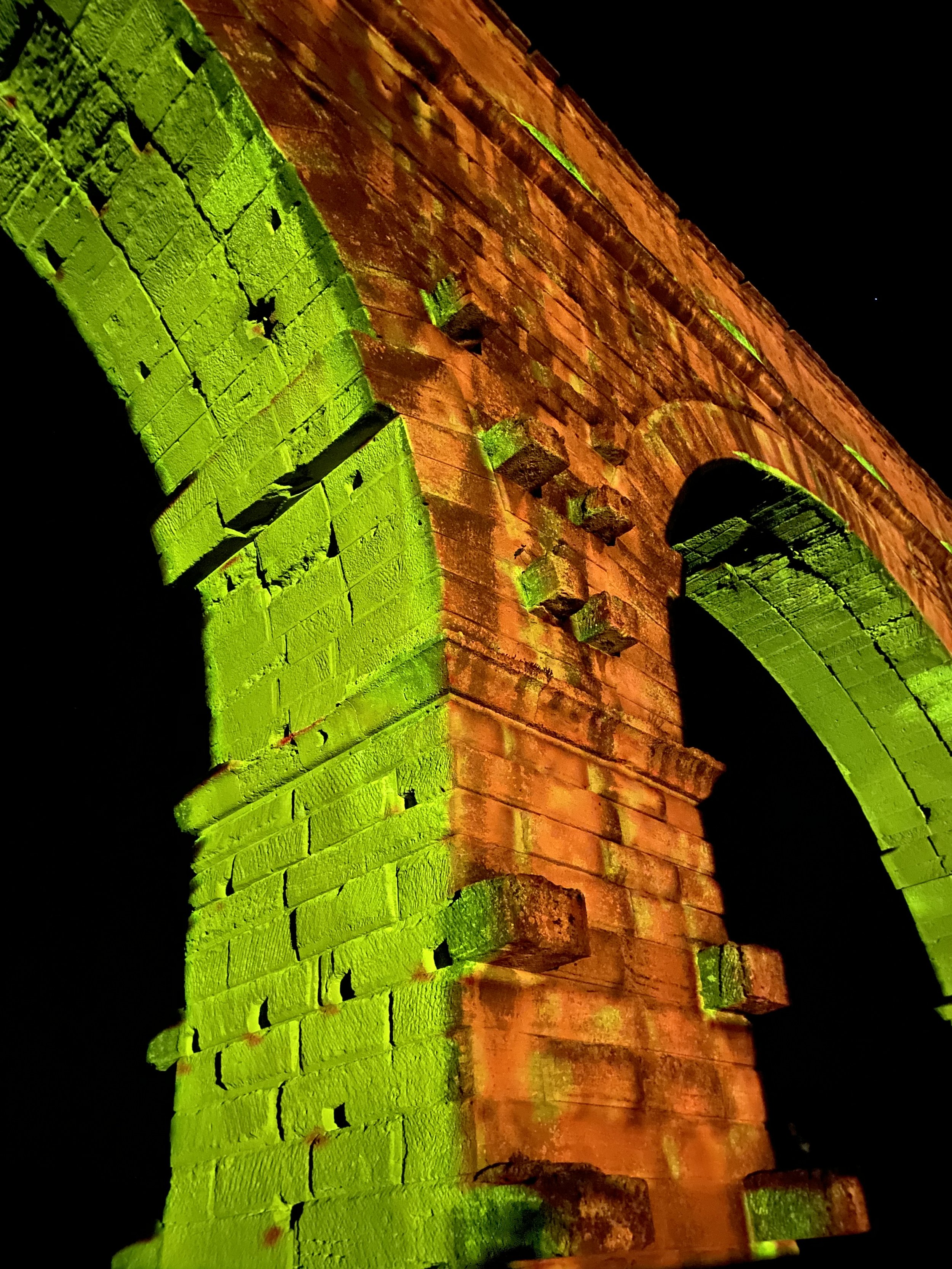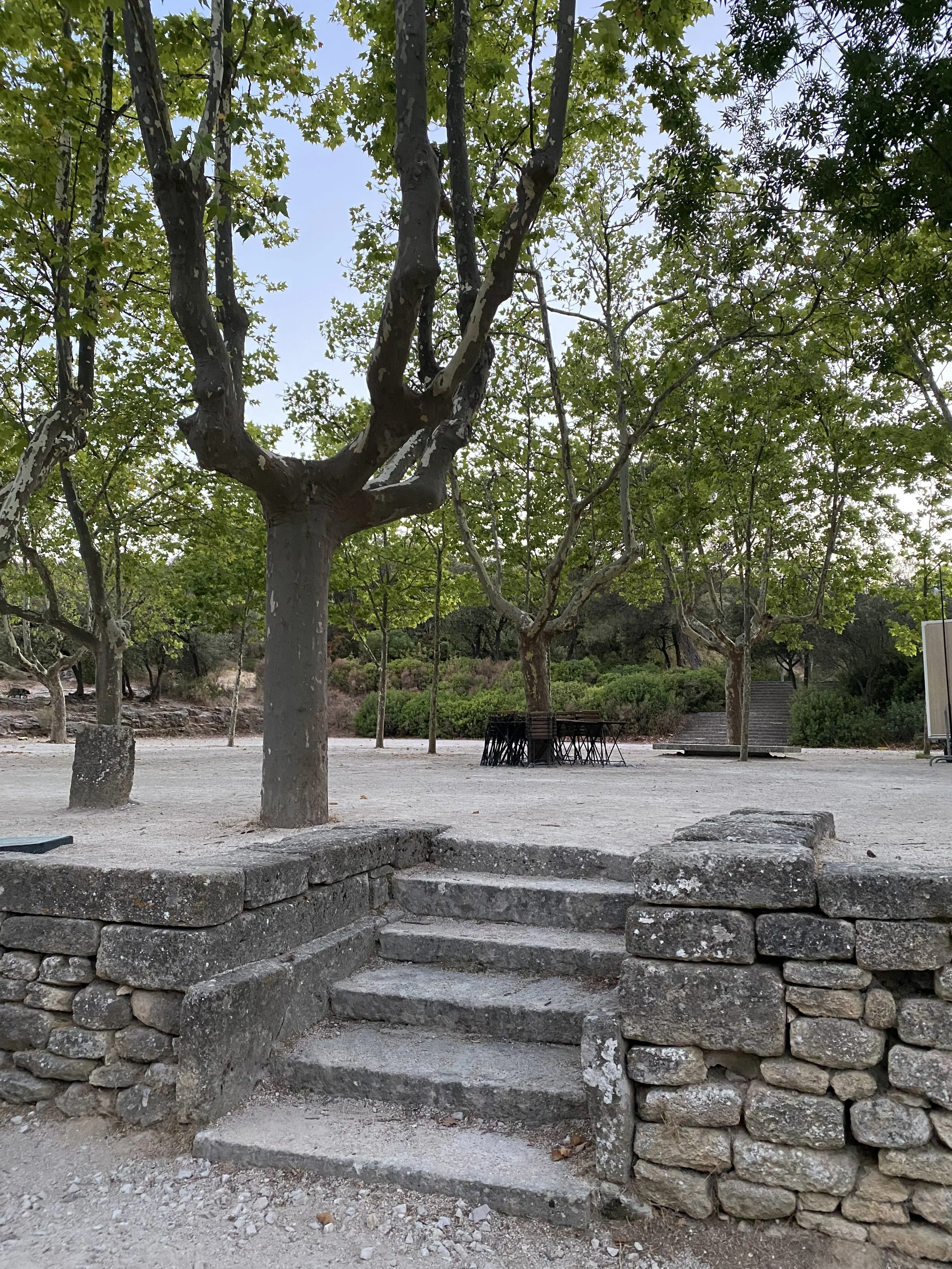Le Pont du Gard: A Roman Engineering Marvel in the Heart of Provence
Le Pont du Gard is a magnificent Roman aqueduct in France's southern region, spanning the Gardon River. It is one of Europe's most well-preserved and significant ancient monuments designated as a UNESCO World Heritage Site.
In this blog post, we will explore Le Pont du Gard's fascinating history, architectural features, and cultural significance in the region.
History of Le Pont du Gard
Construction of the Pont du Gard began in the 1st century AD, during the reign of the Roman emperor Augustus. The aqueduct was built to carry water from the Eure springs at Uzès over the Gardon River to the Roman colony of Nemausus (now known as Nîmes), around 50 kilometers.
The Pont du Gard, a testament to Roman engineering prowess, was not just a bridge but part of a vast aqueduct system. This system, a marvel of its time, included a network of channels, tunnels, and pipes supplying water to various regional cities and settlements. The construction of this grand plan was a remarkable feat, requiring several years and thousands of workers to complete.
It is a three-tiered bridge consisting of a lower level of six arches, a middle class of eleven arches, and an upper level of thirty-five arches. The bridge spans the Gardon River and stands at 49 meters at its highest point.
The Pont du Gard, a symbol of Roman ingenuity, served its purpose for several centuries, supplying water to the city of Nîmes until the fall of the Roman Empire in the 5th century AD. However, time took its toll, and the aqueduct gradually fell into disrepair, losing its functionality by the 18th century.
In the 18th and 19th centuries, there was renewed interest in the Pont du Gard, and efforts were made to preserve and restore the structure. In the 1850s, the aqueduct was officially recognized as a national monument, and in the 1980s, it was designated as a UNESCO World Heritage Site.
Pont du Gard from the Gardon River
Architectural Features of Le Pont du Gard
The Pont du Gard is a remarkable feat of engineering and architecture, and its design and construction continue to amaze people today. The aqueduct was designed to be functional and aesthetically pleasing, reflecting the skills and expertise of the ancient Roman engineers and builders.
The structure consists of three tiers of limestone blocks-constructed arches. The lower level has the largest number of arches, with six spanning the river. The middle class has eleven arches, and the upper level has thirty-five.
Its length is around 1000ft and has a slope of 13.5 inches by 0.62 miles.
The arches are constructed in a semicircular shape, which helps distribute the structure's weight and provides stability. The arches also allow the water to flow freely and reduce the pressure on the design.
The Pont du Gard is also notable for its use of hydraulic engineering. The aqueduct was designed to transport water from the springs at Uzès to the city of Nîmes, a distance of around 50 kilometers. To accomplish this, the engineers designed a channel, tunnel, and pipe system, allowing the water to flow down the gradient and reach its destination.
The aqueduct also includes several features that help regulate water flow, such as settling tanks, which allow sediment to drop out of the water before it is transported further, and sluice gates, which can be opened or closed to control the water flow.
The cultural significance of Le Pont du Gard
The Pont du Gard is not only a remarkable engineering achievement but also a symbol of the cultural heritage and identity of the region. The aqueduct has been an essential part of the landscape for over 2,000 years.
It has been the subject of numerous artworks, poems, and literary works throughout history. It has inspired artists and writers to capture its grandeur and beauty, symbolizing the region's rich history and cultural heritage.
The aqueduct has also played a valuable role in the lives of the people who lived in the region. The water that flowed through the Pont du Gard supplied the city of Nîmes with water for drinking, bathing, and other daily needs. The water was also used for irrigation, allowing crops to be cultivated in an otherwise arid region.
Today, the Pont du Gard holds a special place in the hearts of the region's people. It is a popular tourist destination, attracting visitors from around the world who come to marvel at its grandeur and learn about its history. It is also famous for swimming, canoeing, and other recreational activities. In addition, the river beneath the bridge is famous for locals and tourists to cool off during the hot summer months.
In addition to its cultural and historical significance, the Pont du Gard also serves as a reminder of the ingenuity and resourcefulness of the ancient Romans. The aqueduct was an incredible engineering feat, requiring the skills of thousands of workers to complete. It is a testament to the Roman Empire's ability to construct large-scale infrastructure projects and to the ingenuity of their engineers and builders.
Pont du Gard from the Gardon River
Preservation and restoration efforts
Despite its importance and popularity, the Pont du Gard has faced numerous challenges. The aqueduct suffered significant damage during the Middle Ages, as it was often used as a quarry for building materials. In the 18th and 19th centuries, there were renewed efforts to preserve and restore the structure, and significant restorations were carried out to repair damage and stabilize the aqueduct.
In recent years, preservation and restoration efforts have focused on protecting the Pont du Gard from the effects of climate change and increasing tourist traffic. In 2019, a new visitor center was opened at the site, which provides visitors with information about the aqueduct's history and the region and educational resources for school groups and other visitors.
Efforts have also been made to reduce the impact of tourism on the site. The Pont du Gard has been the subject of several studies on sustainable tourism, which aim to reduce the environmental impact of visitors and promote responsible tourism practices. Measures such as reducing plastic use, encouraging public transportation, and limiting the number of visitors to the site have been implemented in recent years.
Conclusion
Le Pont du Gard is a remarkable ancient monument that inspires awe and admiration in visitors worldwide. Its history, engineering, and cultural significance make it one of the most important landmarks in Europe and a testament to the ingenuity and resourcefulness of the ancient Romans.
As we look to the future, it is essential to preserve and protect the Pont du Gard and promote responsible tourism practices that allow visitors to appreciate the grandeur and beauty of the site without compromising its integrity or endangering the environment. With continued effort and care, we can ensure that this incredible monument continues to inspire and educate future generations.
Pont du Gard Aqueduc




